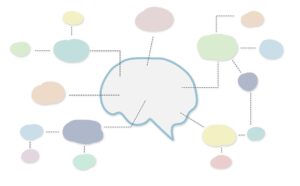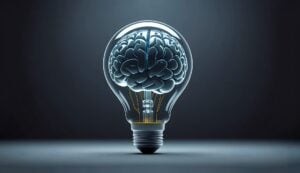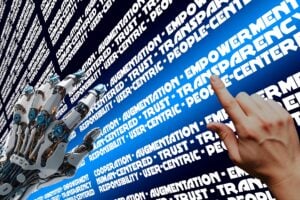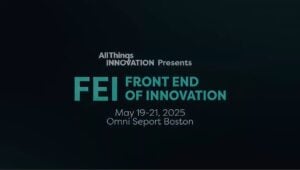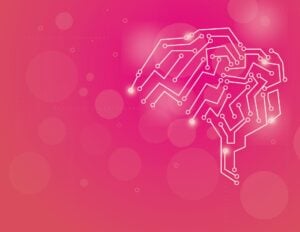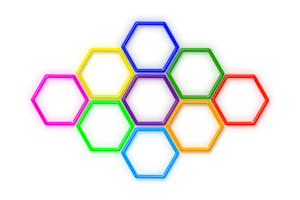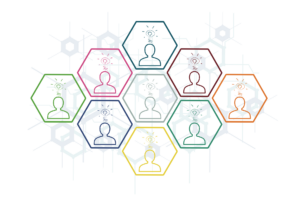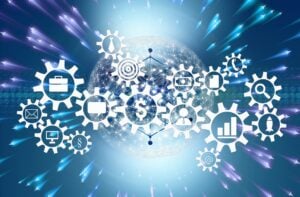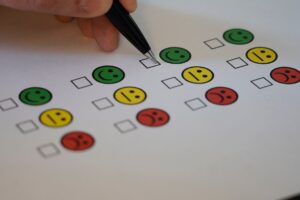Enhancing Collective Intelligence
While there is always a degree of uncertainty when it comes to technology advancements, the evolution of AI is certainly on the upswing. Just how is it changing the game when it comes to innovation?
For Marci Ruman, Global Innovation Strategist at Kimberly-Clark, AI is becoming a valuable tool in the toolbox for its efficiency, automation and speed. But like any tool, you must weigh the advantages and disadvantages to its use.
“With any tool, there are pros and cons to using it and you have to use your critical thinking to make sure, is the output that I got from that tool making sense and is it valuable to go ahead,” she says. “This is similar to the FEI conference, which is really about being human-centric and AI-centric and then putting it all together. But AI changes everything—especially when coupled with human intelligence. Together their collective intelligence has enhanced creativity and design, automated complex tasks, and generated new insights, products and business models.”
Still, there is some caution to using AI and other technologies. This especially holds true when it comes to the use of data, personal data in particular.
“Today, innovation technology is at a pivotal moment—full of promise, but also facing new debates and challenges,” observes Ruman. “Current concerns, challenges, and emerging opportunities are related to ethics, intellectual property, regulations and compliance, and supply chain risks.”
Ruman continues, “I would say as a consumer, I am most concerned about what companies know about me and how they’re using that data. Granted, when companies collect that information, they’re not necessarily saying, hey, this is the data about Marci and this is everything about Marci. They’re analyzing the data altogether and looking at the themes and that sort of thing. But sometimes it’s surprising when you’re shopping, and it starts giving you recommendations on what to buy based on what you purchased before. Sometimes it feels like, wow, these companies know so much about me. As time goes on, we’ll have to make sure that people’s data remains private and that we have good morals and ethics in how we leverage that data.”
As for what might be on horizon, in terms of tools and technologies, Ruman sees a continuing growth of AI, so in that sense the trend has already started.
“There are sometimes weak signals that exist that lead you into what is a future trend,” notes Ruman. “But for the most part, particularly with AI, the big change is the hyper personalization that’s happening. That enables us to really being able to customize products for people. People want solutions that are tailored to them. That’s a big opportunity as opposed to selling the same thing to everyone.”
But for Ruman, the process of innovation is not so much about the technology. That may change or improve operations and systems over time.
She adds, “Tools come and go. There’s always a new version of a tool. People always laugh at me when they say, well, what tool do you use to do your research? And I say the scientific method. But are you using design thinking? Who are you partnering with? I see a lot of these tools, there are similarities across all of them, and there are different variations of them, and they have evolved over time to be more effective and such. But the underlying premise of everything, it’s really understating your ‘why,’ challenging current thinking, and figuring out how to make it happen.”
Developing Strategic Thought Partnerships
Divya Harpalani, Product Manager at B&H Photo, has also seen AI as a beneficial force in innovation. Although for her part, she sees AI as more than a tool and more as a supportive thinking partner. It has opened pathways to thinking differently and thinking bigger about problems and their solutions.
“AI has definitely changed the game for innovation technology as people have started adopting AI at different levels for approaching a problem,” says Harpalani. “It has helped us in seeing our problems differently especially when it comes to accelerating human productivity and creativity. We now have started seeing AI more as a thinking partner, as a colleague with whom we work with than using it as a tool. This has resulted in a progressive work culture, where people are creating more generative outputs than before.”
Still, the jury is out on whether AI will impact someone’s career in innovation. But it has intensified the game.
She adds, “In terms of career, it has become more competitive than before as there are always different levels of intensity by people to use AI. We need to be aware of how to use it and up to what extent. It is proven that AI will never replace humans but it will definitely replace humans using AI with humans who are not using AI at all.”
Harpalani, like Ruman, also agrees that with the advent of AI, questions of data governance and data quality abound.
“The topic that has been up for debate regarding innovation tech is ethical data and data privacy,” asserts Harpalani. “While most of us use AI in our lives to perform better at our tasks, there is a risk of your data being misused. While it may fasten our process of working, having boundaries and knowing when and up to what extent can it be used for is crucial. Trust, personalized solutions to one’s queries and the risk of private data being shared are constant topics for concerns and challenging ourselves with questions of if we are actually innovating or causing a threat. In these scenarios, it’s important to leverage the power of collective intelligence which is using AI and HI, and that will help us navigate the complexities of innovation tech.”
As to what lies ahead in terms of emerging technologies, Harpalani prefers to stay a bit grounded and focus on specific industries.
She observes, “Some of the most common generation trends, tools and emerging technologies that I see regarding innovation tech is the use of AI in healthcare to help us know and detect risks beforehand. That can inform planning and strategies for any kind of treatment. Some of the most emerging gen AI tools used for healthcare are Aidoc, Path ai and Helix. Besides healthcare, there has been an emerging trend and use of tools like MiroAi, FigmAi, NotionAi, Copilot, Perplexity, and Deep Seek in the corporate world to help us in increasing efficiency, boost creativity and take a different approach to our daily innovation tasks.”
Related stories in the Innovation Technology series:
• “Technology: Powering the Future of Innovation”
• “From Friction to Flow: Streamlining Innovation”
• “Connecting the Dots: Balancing Technology with Human Insight”
Video courtesy of Just Curious
Contributor
-

Matthew Kramer is the Digital Editor for All Things Insights & All Things Innovation. He has over 20 years of experience working in publishing and media companies, on a variety of business-to-business publications, websites and trade shows.
View all posts








